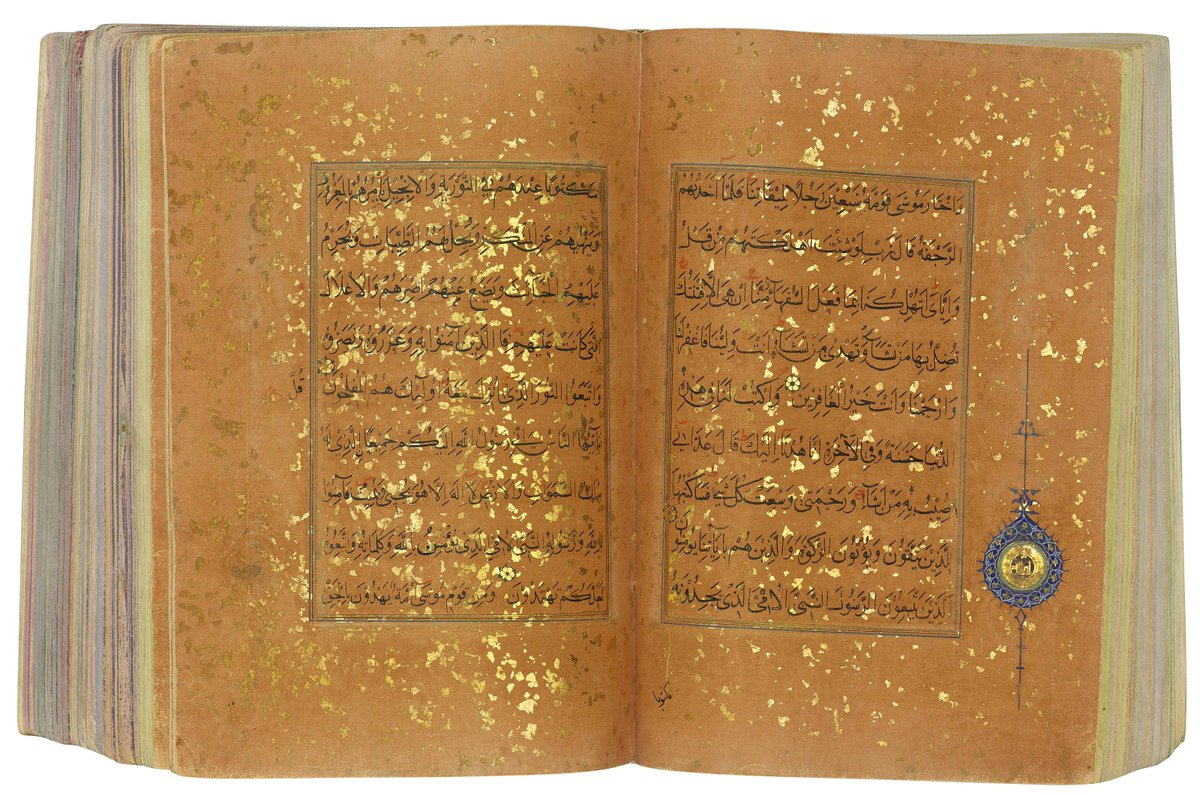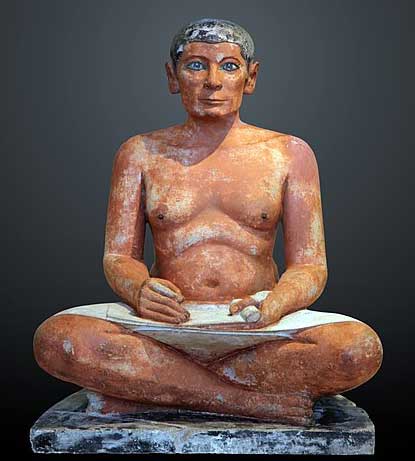This heartstoppingly beautiful 15th century Timurid Qur'an copied on Ming Dynasty gold-painted colored paper, was sold to an unknown buyer by @ChristiesInc in London in July 2020 for just over £7 million. Only 4 similar Qur'ans written on Chinese paper like this are known. 1/ 





The @ChristiesInc hammer price was over twelve times the estimate: £6 million pounds. This equates to £7,016,250 after buyers fees, which is about $9.76 million - the highest price ever reached by a Qur'an. Christies has not released the name of the buyer. 2/ 

Although coloured paper was used in the Islamic world for many centuries, Chinese paper had a particular appeal with its luscious finish, vibrant colours and exotic designs. The silky texture is achieved through the technique of permeating the paper with lead white. 3/ 

The orientation of the paper does not always follow the direction of the text - this is likely an intentional decision made by the calligrapher, to emphasize the Qur’anic text as the most important feature, with the background decoration of only secondary, superficial beauty. 4/ 



The formula with which the paper was permeated and dyed is still not fully known. It was not just its velvety texture that made the paper desirable but also its range of colours, which were extensive and in this Qur'an include shades of blue, pink, lavender, yellow & green. 5/ 





Many pages in this Qur’an are decorated with gold speckles or characteristically Chinese motifs such as naturalistic details of plants like peach blossoms, architecture & landscapes. These designs resonate with the patterns seen on Ming silks and blue and white porcelain. 6/ 







A late 14th century Chinese source associates the making of 'waxed paper' with the city of Shaohsing on the south-central coast of China. It's thought that at least one batch of paper was brought back from China by an emissary sent by Shah Rukh who returned in 1422. 7/ 



Before the discovery of this Qur’an, only 6 literary manuscripts, a Sufi treatise and 4 Qur’ans created from Chinese paper had been identified. The four previously known Qur’ans include those in the Detroit Institute of Art and the Türk ve Islam Eserleri Muzesi in Istanbul. 8/ 

This magnificent Timurid Qur’an is a stunning example of the innovation of the imperial studios of 15th century Persia; it also embodies the physical evidence of the cultural and diplomatic relations between Ming China and Timurid Iran. 9/ 

Thanks to the kindness of @mcburney_nick, who photographed the entire manuscript prior to the sale, I can share with you a complete set of over 1000 images of this remarkable multicolored Timurid Qur'an, the whole manuscript, from first page to last. 10/
dropbox.com/sh/j9mq9232ih7…
dropbox.com/sh/j9mq9232ih7…
This manuscript has its own Wikipedia page, which you can access here. 11/
en.wikipedia.org/wiki/Timurid_Q…
en.wikipedia.org/wiki/Timurid_Q…

• • •
Missing some Tweet in this thread? You can try to
force a refresh


















